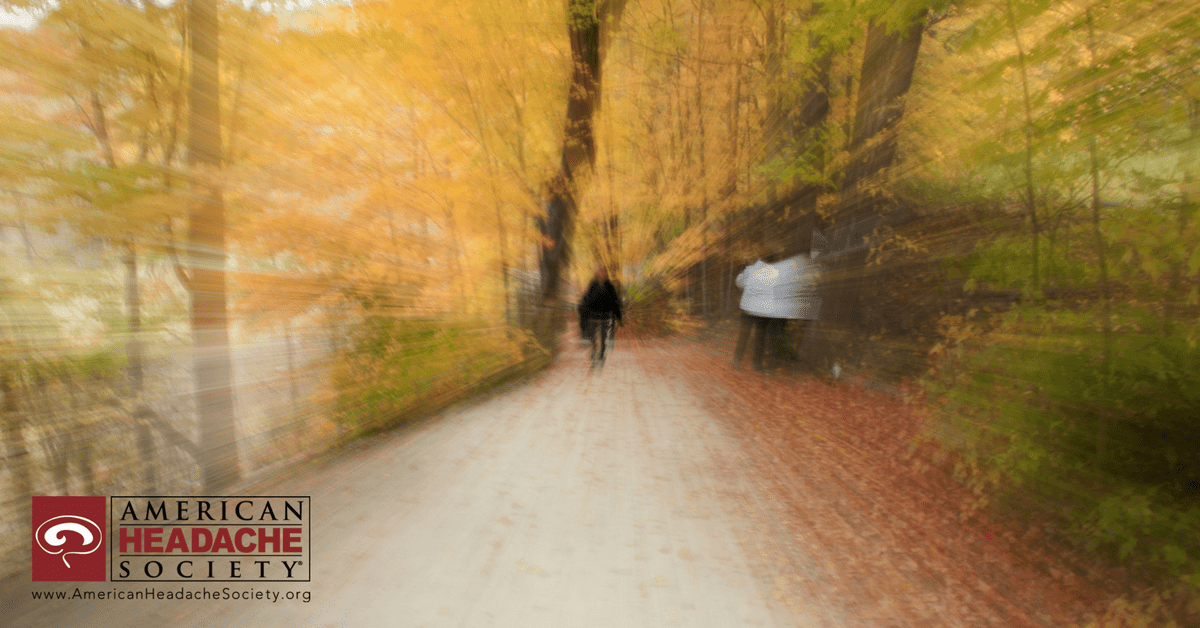
From the Journal: Migraine and Vertigo
New research in Headache illuminates the characteristics of migraine with vertigo, also known as vestibular migraine
Research has shown that patients with migraine are more likely to experience vertigo—a sensation of dizziness and loss of balance sometimes caused by diseases affecting the inner ear, or vestibular nerve—than the general population. In 2012, a joint committee assembled by the International Headache Society and the Bárány Society established diagnostic criteria for vestibular migraine, although the criteria is largely based on individual patients’ clinical history.
The study published in Headache, Clinical Features, Familial History and Migraine Precursors in Patients with Definite Vestibular Migraine¹ by Roberto Teggi, MD, et al. sought to further define the characteristics of vestibular migraine by examining the clinical features, familial history and migraine precursors of patients with definite vestibular migraine as described by the existing diagnostic criteria. This cross-sectional multicentric study was performed by in multiple centers in Italy and Spain, observing 252 subjects. Two hundred and sixty-five patients were initially enrolled, but 13 were excluded, as their symptoms did not completely align with the diagnostic criteria for vestibular migraine.
The finalized patient selection answered a structured questionnaire designed to record symptoms and further characterize their vestibular phenotype. Vertigo can be internal or external, so it was important to distinguish the exact symptoms experienced by each patient. The symptoms were them classified into groups based on the duration of the attack (less than 5 minutes, 6 minutes to less than an hour, from 1 to 4 hours, from 5 to 24 hours, up to 3 days, more than 3 days). Multiple answers per patient were accepted when collecting data on the vestibular phenotype and duration of attacks. Patients were also asked about the age of onset of their vestibular symptoms and headache, and about the accompanying symptoms that occur during the attack beyond vertigo, like photophobia, phonophobia and aura.
This data gathered from this study helped establish an average age of onset of vestibular migraine, as well as patient demographics. Results found that most patients had been living with migraine for around 15 years before their first experience with vestibular migraine. Patients who reported experiencing both at the same time for the first time had a below average age of onset for both. This indicates that vestibular symptoms in pediatric patients may be an indicator for the eventual development of vestibular migraine in adulthood. The study also found a high rate of patients citing a familial history of migraine (73.1%) and episodic vertigo (66.2%). This research will allow doctors and patients to better predict the risk of vestibular migraine onset by further examining predisposing factors associated with the disease. The better researchers and clinicians understand vestibular migraine, the better we will be able to treat its symptoms in the future.
The American Headache Society is committed to keeping its members up to date on the most innovative and meaningful advancements in the realm of headache medicine. One of many initiatives to support that mission is our publication of Headache: The Journal of Head and Face Pain, published ten times per year, which highlights the latest findings in the realm of headache medicine research. Our “From the Journal” series offers a preview of some of the groundbreaking work detailed in Headache. Enjoy access to the full catalogue of content plus a print subscription included with an American Headache Society Membership. Click here to become a member today.


